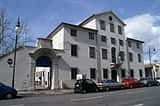Stay
Visit a locality browsing the menu on the left. In each Italy area you can then choose the best touristical structures we are proposing.
Most viewed in
Italy
-
Sunland since 1979 is the leading tour operator for ground hanling services on Amalfi Coast, Cilento and Neapolitan Riviera. Sunland is the partner of some of the biggest tour operator world wide. Our attentive staff is at your service for: Hotel accomodation...
-
The Amalfi Coast, suspended between sea and Sky, is a land of an amazing beauty. Our wish, having the pleasure to be your driver/guide, is to share with you the traditions, art, history, landscapes and the beauty that makes this land, " The Divine Amalfi...
-
Self-catering villas and apartments on the Amalfi Coast with pool, access to the sea and air conditioning. Amalfi Vacation owns and manages all the Amalfi Coast villas shown on the website. We are specialists in luxury villas and self-catering apartments...
-
Located on the famous AmalfiCoast drive, a few minutes from the famous town of Amalfi, the Santa Caterina enjoys a panoramic coastal setting of incomparable beauty. The history of this special resort is as impressive as its surroundings. In 1880, Giuseppe...
-
Situated on the last bend of Amalfi's promenade and beach, this hotel is on four levels. Bright and Mediterranean in style, the Marina Riviera is a converted old noble villa. All rooms are spacious & tastefully furnished, and have open windows or balconies...
Print this page
Send to a friend by e-mail
The Museum of the Sea
-

The Civic Museum of the Sea is one of the most important of its kind in the whole Mediterranean area, and is intended to show the importance of the sea in Trieste's history and the contribution made by Trieste and her people. From the panels about Trieste and Salt production, visitors come to the rooms dedicated to the inventor Marconi where a model of his ship - the Electra, from which the first wireless telegraph message was transmitted - can be seen, and to Ressel who carried out the first experiments into the use of the propeller in ships with a steam engine. The Museum dates back to 1888, when the Società di Pesca e Pescicoltura Marina began to plan what in 1904 became the Museum of Fishing, with connected laboratories for biological analysis. The collection of the Nautical School went on to form the Permanent Maritime Exhibition which found a home in the building in Via Campo Marzio in the Lazzaretto San Carlo, where today there are models of both primitive and mediaeval boats with explanatory panels about the evolution of boats and in particular of the development of those from the Mediterranean.
Point of interest
One of the most exciting sections of the Museum concerns the age-old method of extracting salt, which is based on a complex system of crystalisation basins and was used along the whole of the Adriatic coast. The display includes a model re-creating part of the salt-works at Semedella, near Capodistria.